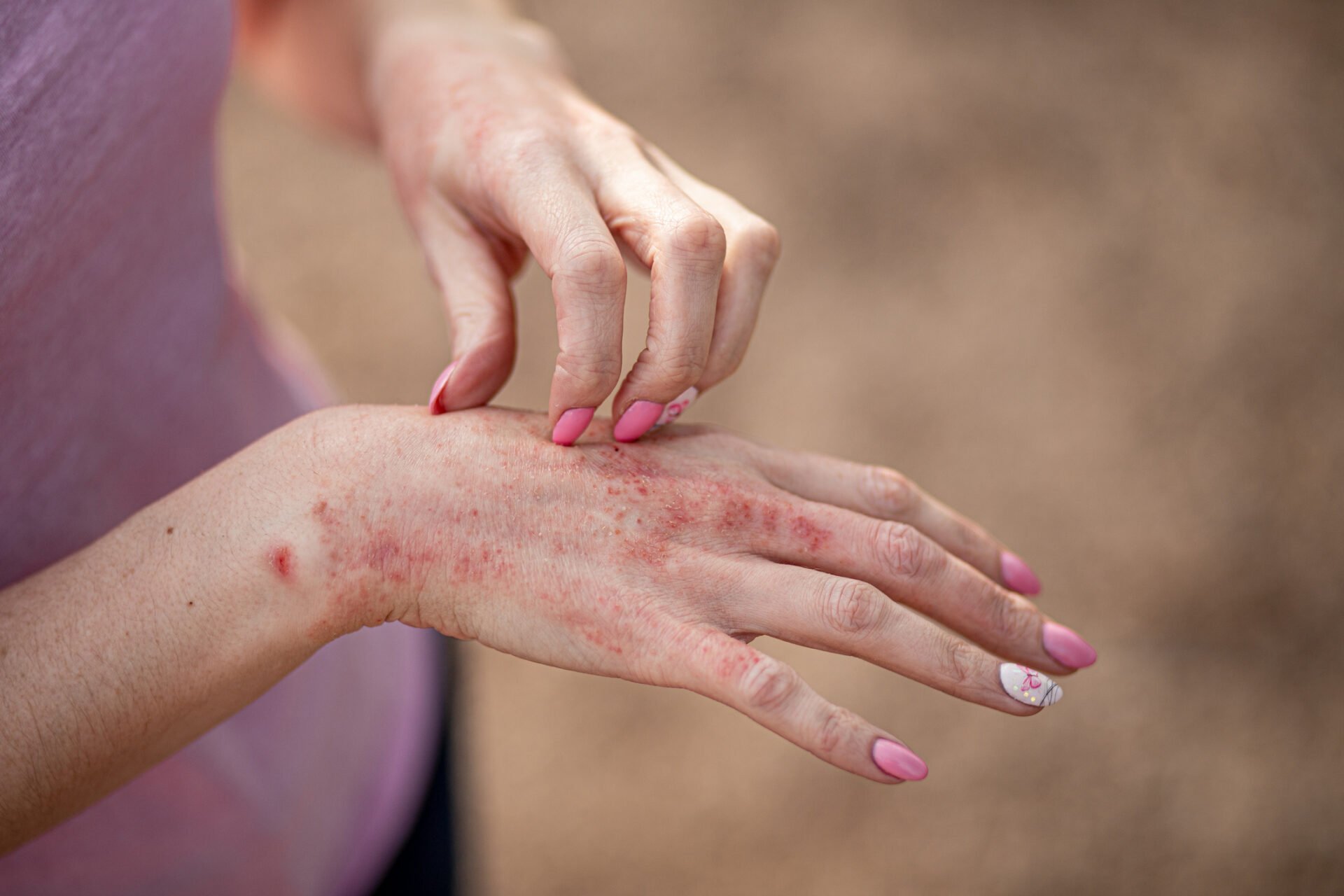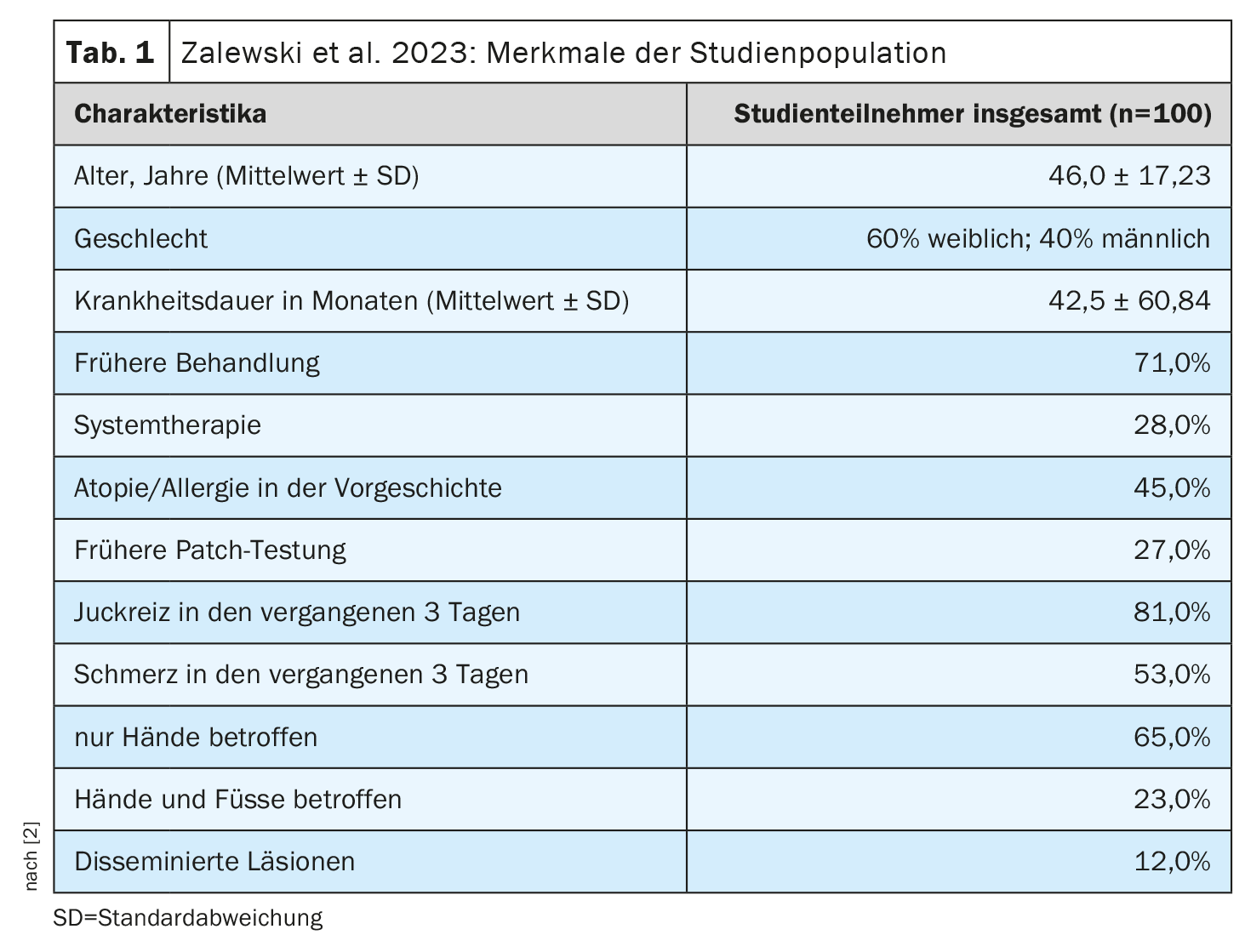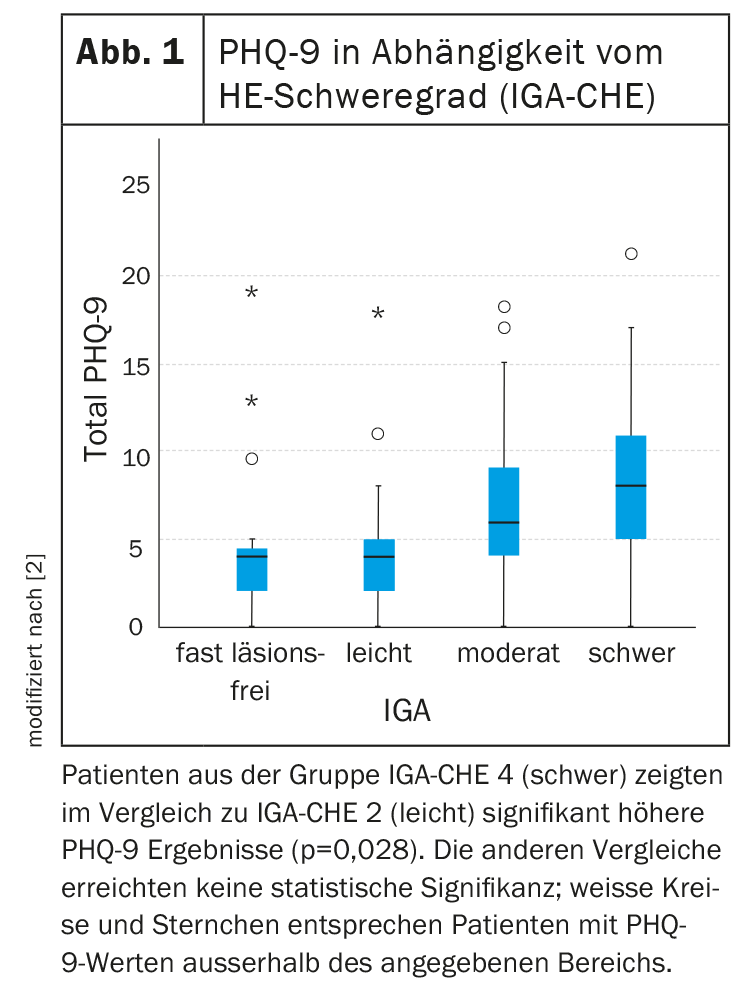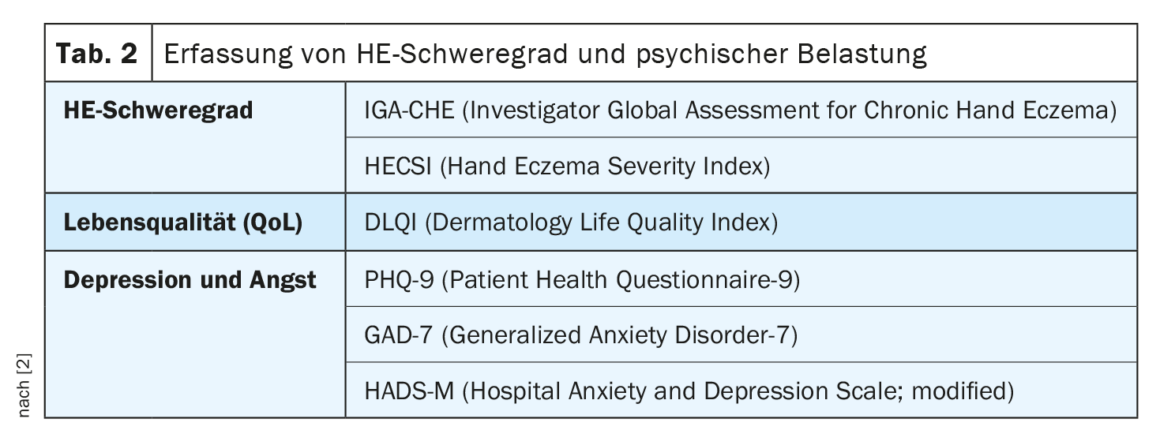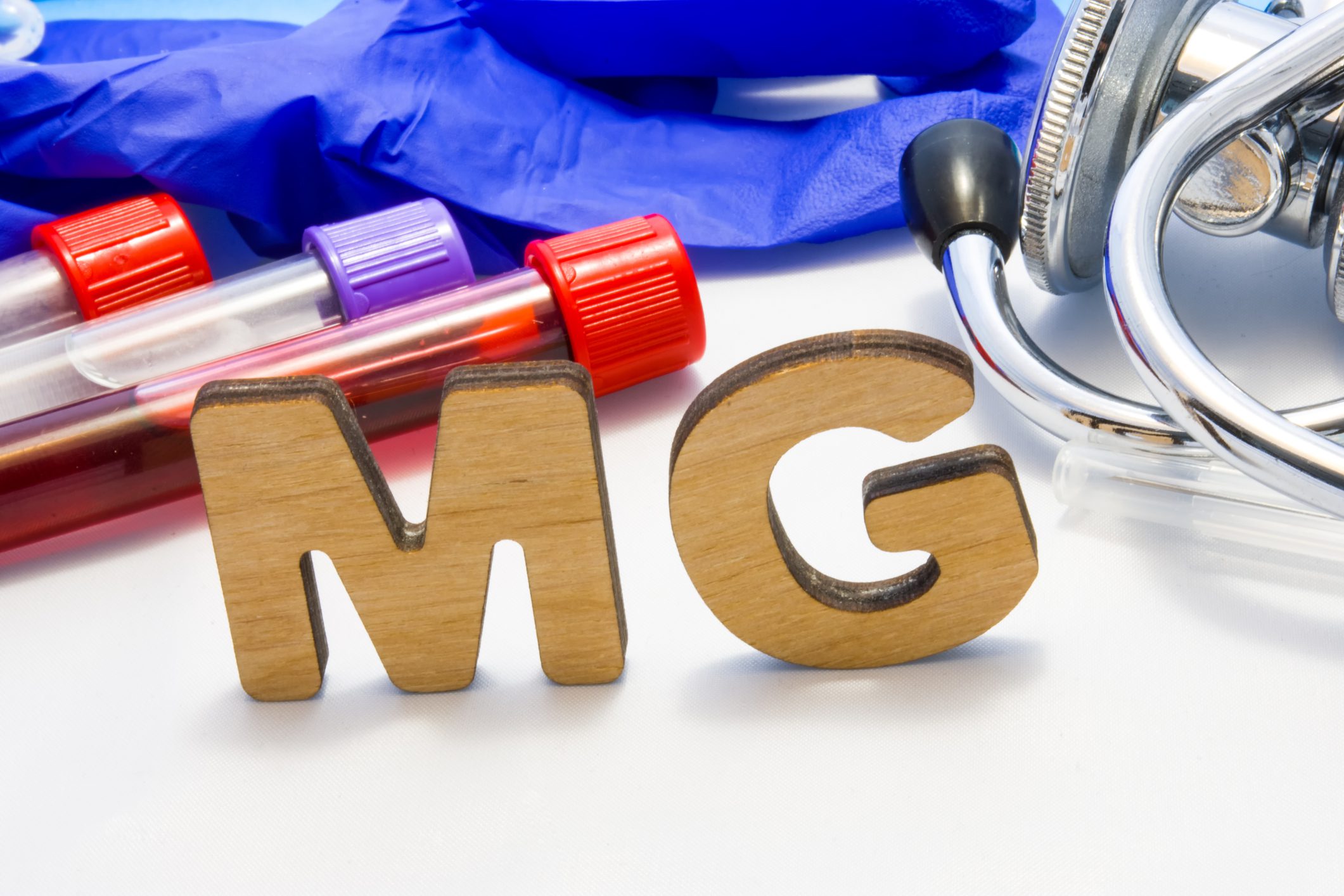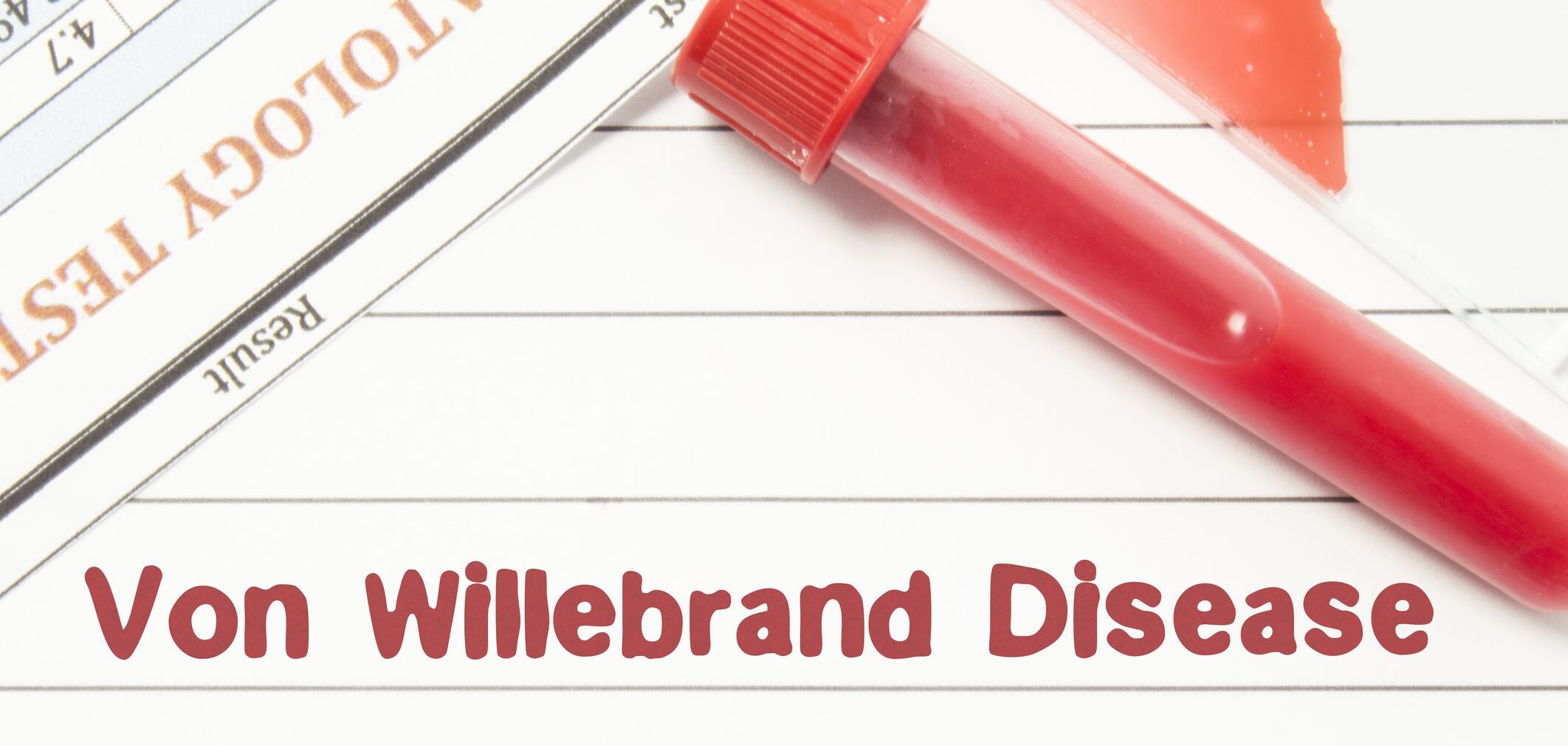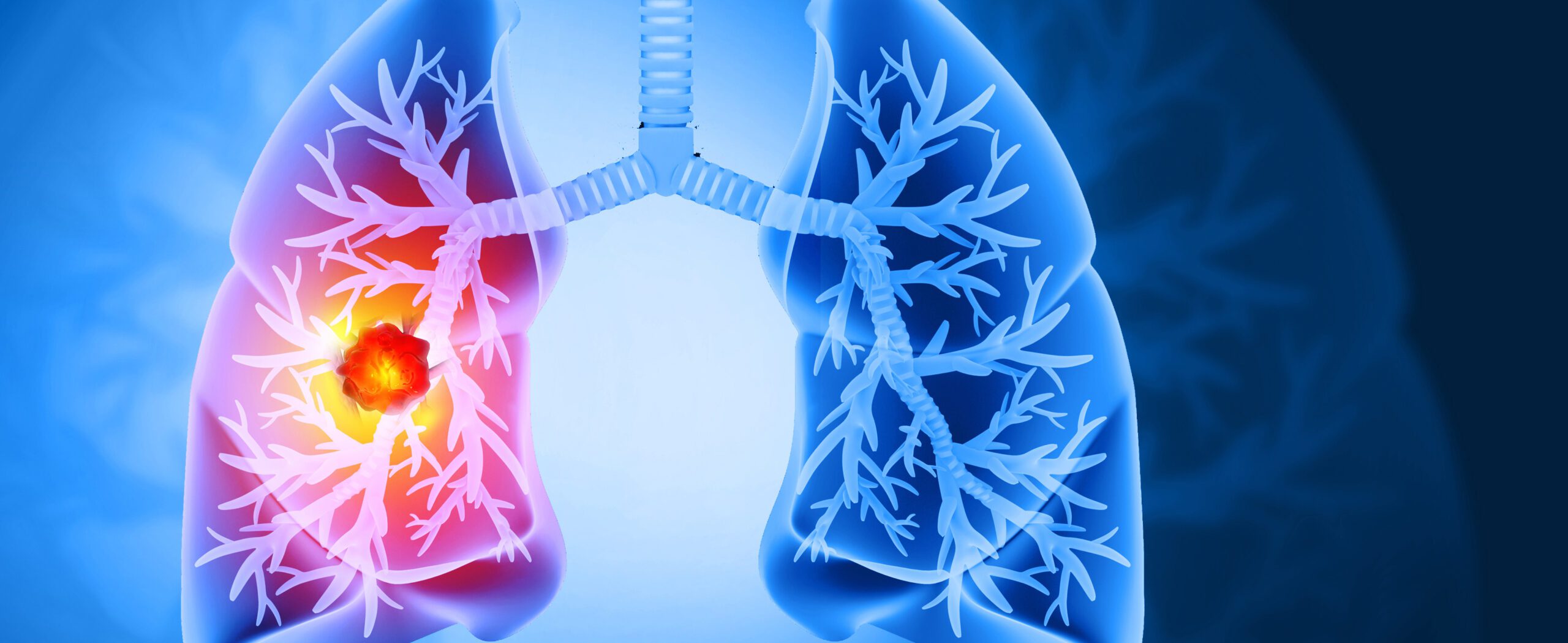Hand eczema (HE) has a negative impact on the quality of life of those affected, as shown by various empirical studies. In a study published in 2023 in the Journal of Clinical Medicine by Zalewski et al. anxiety and depression as well as quality of life impairments were recorded in a sample of HE patients. The results indicate that the extent of mental impairment is correlated with the severity of HE.
Various earlier studies, such as that by Cazzaniga et al [1], show that hand eczema (HE) is associated with impaired quality of life. The study by Zalewski et al. also aimed to assess the psychological burden of hand eczema (HE) in terms of the presence and severity of anxiety and depressive disorders [2]. The study population consisted of 100 adult HE patients (Table 1) [2].
Over half of the participants had moderate or severe HE
The mean HECSI score for the entire study population was 35.0 ± 27.8, and when broken down by gender, the mean HECSI scores were 29.3 ± 26.7 for male participants and 38.8 ± 28.1 for female participants [2]. The distribution of HE severity (IGA-CHE; scale: 0-4) in relation to the total study population was as follows:
- almost appearance-free (IGA-CHE 1): 15,0%
- light HE (IGA-CHE 2): 25,0%
- moderate HE (IGA-CHE 3): 37,0%
- heavy HE (IGA-CHE 4): 23,0 %
Broken down by gender, most men fell into groups IGA 1 and 2 (n=11; 27.5% in both groups), while IGA 3 was the predominant category for women (n=28; 46.7%).
DLQI correlated positively with HE severity
The mean DLQI score for the entire sample (n=100) was assessed as 11.62 ± 6.35 points [2]. In most cases, HE had a moderate (33%) or very high (39%) impact on the patient’s quality of life. For 18% of respondents, the illness had no or a minor impact (2% and 16% respectively) and for 10% it had an extremely major impact. Looking at the breakdown by gender, the mean DLQI score for women was 13.27 ± 6.67 points, while the mean DLQI score for men was 9.15 ± 4.95 points. This difference was statistically significant (p=0.023). For 46.7% (n=28) of women, the effect on quality of life was rated as very high, while for men, a moderate effect was most common at 42.5% (n=17). The decrease in quality of life correlated positively with the severity of the disease, as measured by IGA-CHE (r=0.617; p<0.001) and HECSI (r=0.579; p<0.001). The total DLQI score correlated positively with the extent of itching and pain in the three days before the study was conducted (r=0.436, p<0.001, and r=0.305, p=0.002, respectively).
Intensity of depressive symptoms highest in severe HE
The presence and extent of depressive symptoms were operationalized using the two standardized psychometric questionnaires PHQ-9 and HADS-M [2].
PHQ-9: Based on the PHQ-9 cut-off of ≥10 points, a possible diagnosis of a depressive disorder was identified in 17% of the total study population (n=100); this applied to 21.7% (n=13) of the female participants and 10% (n=4) of the male participants, although the difference between the two groups was not statistically significant. The mean PHQ-9 score for the overall study population was also 6.3 ± 4.9 points. The mean value for women was 7.12 ± 5.14 and for men 5.08 ± 4.14 points. This difference was also not statistically significant. Differences in the PHQ-9 total score in patients from certain IGA-CHE severity groups are shown in Figure 1. When comparing patients in the IGA-CHE 4 group (severe) with patients in the IGA-CHE 2 group (mild), significantly higher PHQ-9 results were found (p=0.028). In the other IGA-CHE groups (1 (almost appearance-free) vs. 2 (mild HE), 1 (almost appearance-free) vs. 3 (moderate HE) and 3 (moderate HE) vs. 4 (severe HE), the results were numerically higher, but did not reach statistical significance. A correlation between the intensity of depressive symptoms and the severity of HE was found for both HECSI (r=0.264; p=0.008) and IGA-CHE scores (r=0.329; p=0.001). Patients who scored higher on the PHQ-9 questionnaire reported greater intensity of itching (r=0.363; p<0.001) and pain (r=0.445; p<0.001) in the last three days before the study. The PHQ-9 values also correlated with the decrease in quality of life (r=0.537; p<0.001). In addition, a positive correlation was found between the PHQ-9 scores and other scales, which included not only depression (HADS-D: r=0.664; p<0.001), but also anxiety (GAD-7: r=0.617; p<0.001 and HADS-A: (r=0.690; p<0.001).
HADS-M depression: For the entire study population, the mean value of the HADS-M-D was 4.7 ± 3.1 points. The corresponding value for women was 5.22 ± 3.29 points, for men 3.83 ± 2.74 points. This difference proved to be statistically significant (p=0.029). The intensity of the depressive symptoms measured in the HADS-M correlated positively with the severity of the disease (for IGA-CHE: r=0.283; p=0.004, or HESCI: r=0.228; p=0.004) as well as with the intensity of itching (r=0.237; p=0.017) and pain (r=0.287; p=0.004). In summary, an association was found with the severity, but not with the duration of the disease.
| Hand Eczema Severity Index (HECSI) |
| This scale reflects the intensity, extent and clinical manifestations of the disease. The hands are divided into five different regions: Fingertips, fingers (without fingertips), palm, back of the hand and wrists. In each of these regions, the intensity of six specific clinical signs is graded: Erythema, induration/papulation, vesicles, cracking, scaling and edema. The assessment is based on the following scale: |
| – 0 (no observable skin changes) – 1 (mild disease) – 2 (moderate disease) – 3 (severe disease) |
| For each individual area, the cumulatively affected skin area is scored with points between 0 and 4 to indicate the extent of clinical symptoms (0=0%, 1=1-25%, 2=26-50%, 3=51-75%, 4=76-100%). The score awarded for the extent of clinical symptoms in each area is multiplied by the total sum of the intensity levels for each clinical feature and added together. The final HECSI score ranges from 0 to 360 points, with 360 being the highest severity level. |
| to [2,3] |
Anxiety in subpopulations of the test subject collective
The GAD-7 and the HADS-M-A were used to explore the presence and severity of anxiety disorders [2].
GAD-7: According to the GAD-7 anxiety diagnostic criteria (cut-off value of ≥ 8 points), an anxiety disorder was diagnosed in 25% of the entire subject collective (n=25), namely in 17 women (28.3%) and 8 men (20%). The difference in frequency between male and female participants did not prove to be significant. The mean GAD-7 score for the entire population studied was 5.8 ± 4.0 points. It was 6.17 ± 4.13 points for women and 5.23 ± 3.75 points for men, although here too there was no significant gender-dependent difference. Interestingly, a correlation was found between the severity of the pain and the presence of an anxiety diagnosis. The mean pain intensity in patients diagnosed with anxiety was 3.48 ± 3.31 points, while the mean value in patients without anxiety was 2.24 ± 2.93 points, measured on the NRS scale in each case. The difference was statistically significant (p=0.034). No such dependence was observed for itching (p>0.05). The severity of the diagnosed anxiety disorder in the population studied correlated positively with the severity of the illness measured in IGA-CHE (r=0.223; p=0.026). No such correlation was found for the HECSI score. The intensity of the anxiety symptoms also correlated with the intensity of the pain (r=0.248; p=0.013). No such correlation was found between the anxiety scores and the intensity of itching (p>0.05). There was also no correlation between the severity of the anxiety and the duration of the illness (p>0.05). The GAD-7 results correlated with the results of the HADS-M (A) questionnaire (r=0.712; p<0.001).
HADS-M-Anxiety: The mean value of the HADS-M-A was 5.3 ± 3.0 points when considering the entire study population. The mean score for women was 5.87 ± 3.36 points and 4.40 ± 2.12 points for men. The difference was statistically significant (p=0.001). A positive correlation was found between the intensity of anxiety symptoms and the severity of the illness, but only for the IGA-CHE score (r=0.230; p=0.022). Similar to the GAD-7 assessment, the results of the HADS-M (A) correlated with the intensity of pain (r=0.342; p=0.001). However, no such correlation was found for itching. Interestingly, the intensity of the anxiety symptoms showed a negative correlation with the duration of the illness (r=-0.215; p=0.032).
Literature:
- Cazzaniga S, et al.: Medical, Psychological and Socio-Economic Implications of Chronic Hand Eczema: A Cross-Sectional Study. JEADV 2016; 30: 628–637.
- Zalewski A, Krajewski PK, Szepietowski JC: Psychosocial Consequences of Hand Eczema-A Prospective Cross-Sectional Study. J Clin Med 2023; 12(17): 5741.
- Held E, et al.: The Hand Eczema Severity Index (HECSI): A Scoring System for Clinical Assessment of Hand Eczema. A Study of Inter- and Intraobserver Reliability. Br J Dermatol 2005; 152: 302–307.
DERMATOLOGIE PRAXIS 2024; 34(3): 24–25


